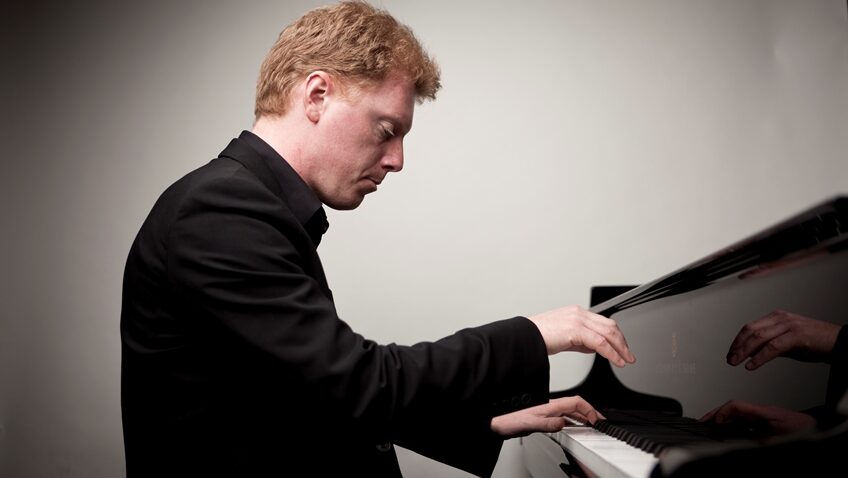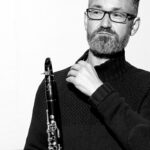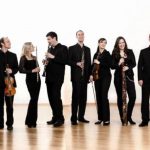Sit Tim Horton at a topless Steinway, then sandwich exciting bursts of controversial Stockhausen between the fascinating bipolar lurches of Schumann’s Kreisleriana and the evergreen, rippling melodic delights of Chopin, and you’re all set for an evening of invigorating, live, live music.
Tim appears here most often when creating mesmerising musical blends with fellow chamber musicians of Music in the Round’s Ensemble 360, of which he’s a founder member. He’s a founder member, too, of the Leonore Piano Trio and also guests with the Nash Ensemble. Being one of the UK’s foremost pianists, he performs solo concerts like this as well and, with full cycles of Schubert and Beethoven Sonatas already under his belt, he’s now cycling on a glorious journey through the works of Chopin.
First up, though, was Schumann (1810-1856) who rated his Kreisleriana Op 16 as the favourite of his own compositions. In eight movements the work reflects the personality of Johannes Kreisler, a character created by E.T.A. Hoffmann (who also inspired Offenbach’s Tales of Hoffmann and wrote the story of The Nutcracker).This fictional Kreisler was an eccentric genius musician whose bipolar tendencies made him wild, volatile and unpredictable, traits Schumann himself could relate to. As they recreate Kreisler’s sudden mood swings, the disparate pieces lurch dramatically from soothing, calm, intimate oases of peace to accelerating climaxes of frantic passion that almost fall over themselves. Schumann wanted to dedicate the work to future wife Clara but her father was so antagonistic to him it was more than unwise to do so; instead, he dedicated it to contemporary composer Chopin. Chopin didn’t gush with enthusiasm over this work but Schumann’s musical drama of contrasting, violent swings of emotion certainly enthralled tonight’s audience a great deal more.
Something not all ears are keen to hear, though, is the avant-garde music of Karlheinz Stockhausen (1928-2007), whose later compositions used synthesisers, electronic instruments – and even… helicopters! With no helicopters on hand tonight, Tim stuck with Stockhausen’s earlier Klavierstuck VII of 1954, extensively revised in 1955. There are 19 Klavierstucke all told, each of varying length, starting at a skimpy 30 seconds. Number seven is six or seven minutes long, and to make those minutes all the more fascinating and enjoyable Mr Horton gave a welcome, chatty explanation of how the music works: forget expectations of anything resembling a tune or Western-style music scales and have in mind, instead, more of a Chinese or gamelan style and a 12-note chromatic scale in which all notes have equal weight and relevance. So far, so good. In addition, this piece also features a highly fascinating, innovative technique: certain piano keys are carefully and silently depressed without being played so that, when other keys are struck (hammered, tapped, assaulted or otherwise coaxed) resonances occur that set up vibrating sounds on the strings of the silently depressed keys; some of these can truly amaze and excite, especially towards the upper and lower end of the piano range. Leaving silent spaces for this to happen – or just for silence to happen – is an essential part of it, too. A wonderful experience.
After that, it was back to a safer, Romantic music style when it comes to delighting the masses – Chopin (1810-1849), with all those elements that evoke positive, pleasing emotions in the listener, like the warm, charming sweep of lilting cantabile melodies, and the trill, thrill and tinkle of exciting chromatic runs and exquisite harmonies. Two much loved Nocturnes, Op 27 (1836) were followed by three of Chopin’s 59 or more Mazurkas in Op 59 (1845), with Sonata No.3 in B Minor Op 58 (1844), the last of Chopin’s Sonatas, singing us through to a galloping, flourishing finale, the exacting technical challenges and energy of the piece seeming not so challenging to Tim at all, leading various people to leap to their feet to applaud.
Eileen Caiger Gray
Music in The Round’s website has details of further concerts in Yorkshire and Wigmore Hall etc and details of next May’s big Festival programme in Sheffield. Click here to find out more.




